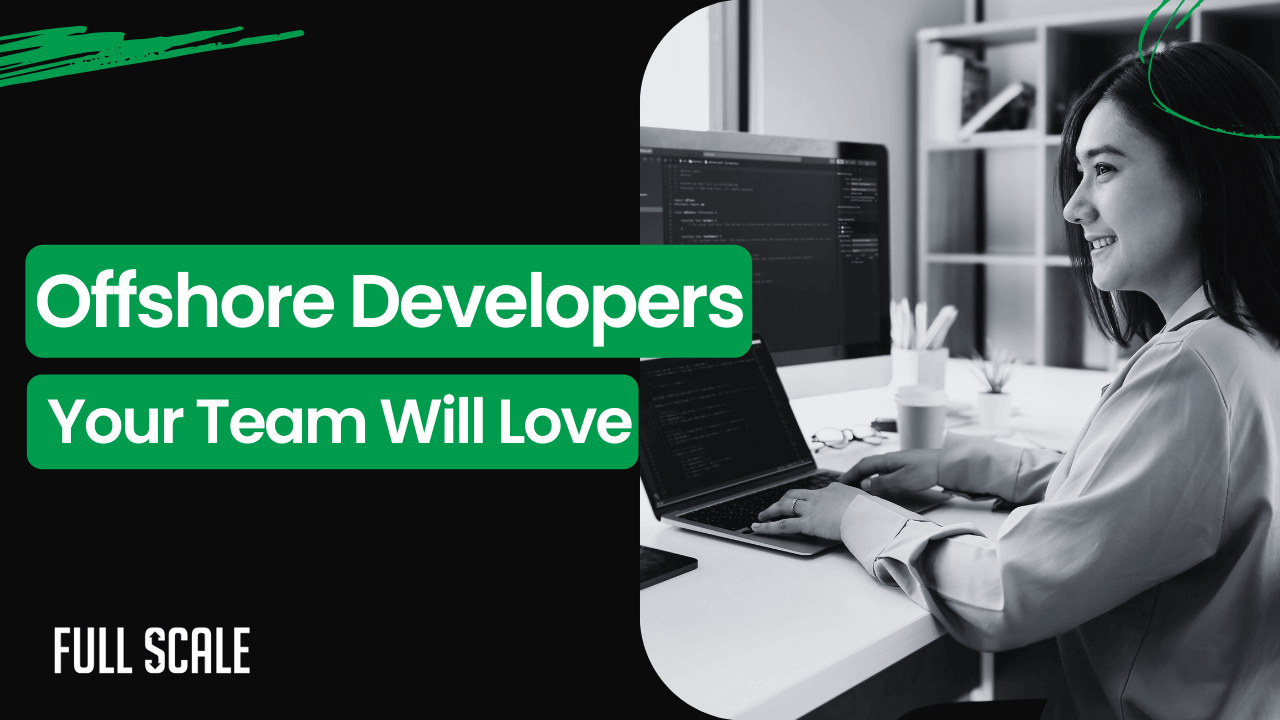Last Updated on 2024-10-11
Python has emerged as one of the most versatile and widely used programming languages in the software development industry.
Its simplicity, flexibility, and extensive library support make it an ideal choice for various applications.
One area where Python truly shines is developing graphical user interfaces (GUIs).
Python GUI development allows software development teams to create intuitive and visually appealing interfaces that enhance user experience and streamline interactions with the underlying software.
In this comprehensive guide, we will explore the world of Python GUI development, its benefits, popular frameworks, best practices, and how it can revolutionize businesses’ approaches to software development.
What is Python GUI?
Python GUI refers to developing graphical user interfaces using the Python programming language. A GUI is a visual interface that allows users to interact with software applications through graphical elements such as buttons, menus, windows, and dialogs.
Python provides a rich set of libraries and frameworks that simplify the process of creating GUIs, making it accessible to developers of all skill levels.
By leveraging Python GUI development, software teams can create compelling and user-friendly interfaces that enhance the overall user experience and improve the adoption and usability of their applications.
Advantages of Using Python for GUI Development
- Rapid development: Python’s simplicity and readability enable developers to write code quickly and efficiently, reducing development time and effort.
- Cross-platform compatibility: Python GUI frameworks often provide cross-platform support, allowing applications to run seamlessly on different operating systems.
- Extensive library support: Python boasts a vast ecosystem of libraries and modules that can be easily integrated into GUI applications, expanding their functionality and capabilities.
- Strong community and resources: Python’s vibrant and supportive community contributes to its growth and provides a wealth of resources, tutorials, and forums for learning and troubleshooting.
Popular Python GUI Frameworks
Python offers several powerful GUI frameworks that cater to different needs and preferences. Let’s explore some of the most popular Python GUI frameworks.
1. Tkinter
Tkinter is the standard GUI library for Python. It is included in the Python standard library and provides a simple and straightforward approach to creating GUIs using native widgets.
2. PyQt
PyQt is a comprehensive set of Python bindings for the Qt framework. It offers various UI elements, graphics capabilities, and tools for building feature-rich and visually appealing GUIs.
3. wxPython
wxPython is a Python wrapper for the wxWidgets library, which allows the creation of native-looking GUIs across multiple platforms.
4. Kivy
Kivy is an open-source Python library for developing multi-touch applications with a modern and attractive interface. It supports both desktop and mobile platforms.
Python GUI Development Best Practices
Follow these best practices to ensure the success and maintainability of your Python GUI projects.
1. Design Principles
- Keep the user interface simple, intuitive, and consistent.
- Follow established design guidelines and conventions for a cohesive user experience.
- Prioritize usability and accessibility to cater to a wide range of users.
2. Code Organization and Structure
- Use modular and reusable code components to promote code maintainability and scalability.
- Separate the GUI code from the core application logic to clearly separate concerns.
- Follow Python coding conventions and best practices, such as PEP 8, for readable and consistent code.
3. Performance Optimization
- Minimize resource usage and optimize performance by efficiently handling events and updating the GUI only when necessary.
- Leverage asynchronous programming techniques to keep the GUI responsive during long-running operations.
- Consider using multi-threading or multi-processing for computationally intensive tasks to avoid freezing the GUI.
4. Testing and Debugging
- Implement comprehensive unit tests to verify the functionality and reliability of your GUI components.
- Use debugging tools and techniques specific to your chosen framework to identify and resolve issues efficiently.
- Conduct thorough user testing to gather feedback and ensure a smooth user experience.
Python GUI for Business Applications
Python GUI development significantly benefits businesses looking to create powerful and user-friendly software solutions. Some key advantages include:
- Rapid prototyping and development: Python’s simplicity and extensive libraries enable businesses to prototype and develop functional GUI applications quickly, reducing time to market.
- Cost-effectiveness: Python is an open-source language with a wide range of free and low-cost GUI frameworks, making it an economical choice for businesses of all sizes.
- Cross-platform compatibility: Python GUI frameworks often support multiple platforms, allowing businesses to develop applications running on different operating systems without significant modifications.
- Customization and flexibility: Python GUI development provides a high degree of customization, enabling businesses to tailor their applications to specific requirements and branding guidelines.
Real-World Examples of Successful Python GUI Implementations
Case studies showcasing the successful implementation of Python GUI in business applications demonstrate the tangible benefits and impact it can have on productivity, user satisfaction, and overall business growth.
- Dropbox: The popular file hosting and synchronization service uses Python and the wxPython framework for its desktop client.
- Calibre: This open-source e-book management software utilizes Python and the Qt framework for its cross-platform GUI.
- Anki: A powerful flashcard application that relies on Python and the Qt framework for its user interface.
Getting Started with Python GUI Development
To embark on your Python GUI development journey, follow these steps:
1. Set up the development environment
- Install Python on your system if you haven’t already.
- Choose a Python GUI framework based on your project requirements and preferences.
- Set up the necessary dependencies and libraries for your chosen framework.
2. Learn the basics
- Familiarize yourself with the fundamental concepts of GUI development, such as widgets, layouts, and event handling.
- Explore the documentation and tutorials specific to your chosen Python GUI framework.
- Experiment with basic GUI components and layouts to gain hands-on experience.
3. Check out resources and tutorials
- Utilize online resources, such as official documentation, community forums, and video tutorials, to deepen your understanding of Python GUI development.
- Engage with the Python community through forums, social media, and local meetups to learn from experienced developers and seek guidance when needed.
Advanced Python GUI Techniques
As you progress in your Python GUI development journey, you can explore advanced techniques to enhance your applications’ functionality and user experience.
1. Customizing GUI appearance
- Tailor the visual appearance of your GUI elements to match your application’s branding and design guidelines.
- Utilize themes, styles, and custom widgets to create a distinct and polished look and feel.
2. Integrating multimedia and graphics
- Incorporate multimedia elements, such as images, icons, and animations, to enrich the visual appeal of your GUI.
- Leverage Python libraries for graphics and data visualization to create interactive and informative displays.
3. Implementing multi-threading and asynchronous programming
- Utilize multi-threading techniques to perform time-consuming tasks in the background, keeping the GUI responsive.
- Employ asynchronous programming paradigms, such as asyncio or concurrent.futures, to handle long-running operations efficiently.
4. Packaging and distributing Python GUI applications
- Learn how to package your Python GUI application into an executable format for easy distribution and installation.
- Explore tools like PyInstaller or cx_Freeze to create standalone executables for different platforms.
Python GUI and Cross-Platform Development
Cross-platform development for Python GUI applications presents its own set of challenges and considerations. Here are a few things you should consider.
1. Compatibility across operating systems
- Ensure your Python GUI application functions consistently across different operating systems, such as Windows, macOS, and Linux.
- Test your application thoroughly on each target platform to identify and address any platform-specific issues.
2. Platform-specific UI guidelines
- Adhere to each operating system’s user interface guidelines and conventions to provide a native and intuitive user experience.
- Customize your GUI elements and behaviors to match users’ expectations on different platforms.
3. Performance and resource usage
- Optimize your Python GUI application for performance and resource efficiency across different hardware configurations.
- Consider each platform’s varying capabilities and limitations when designing and implementing your GUI.
By following best practices and utilizing tools and libraries specifically designed for cross-platform Python GUI development, you can create applications that deliver a seamless and consistent user experience across different operating systems.
Future of Python GUI Development
The future of Python GUI development looks promising, with exciting advancements and trends on the horizon.
1. Emerging technologies
- Integrating emerging technologies like artificial intelligence, machine learning, and natural language processing will enable more intelligent and interactive GUI applications.
- Virtual and augmented reality advancements will open new possibilities for immersive and engaging user experiences.
2. Responsive and adaptive design
- The increasing diversity of devices and screen sizes will drive the need for responsive and adaptive GUI designs that seamlessly adapt to different form factors.
- Python GUI frameworks will evolve to provide better support for creating flexible and fluid user interfaces.
3. Cloud-based and web-based GUIs
- The growth of cloud computing and web technologies will lead to the development of more Python GUI applications that can be accessed and used through web browsers.
- Frameworks and tools that facilitate the creation of web-based GUIs using Python will gain popularity, enabling cross-platform accessibility.
As Python GUI development evolves, software development teams and businesses will have even more opportunities to create innovative, user-friendly, and impactful applications that drive business growth and customer satisfaction.
Work with Full Scale for Your Python GUI Development
Partnering with a reliable, experienced software development services provider like Full Scale can be a game-changer.
Full Scale offers comprehensive development services, including staff augmentation and offshore software development, to help businesses scale their Python GUI projects efficiently and cost-effectively.
Benefits of staff augmentation and offshore software development with Full Scale include:
- Access to skilled Python developers: Full Scale has a pool of highly skilled and experienced Python developers who can quickly integrate into your development team and contribute to your Python GUI projects.
- Cost savings: By leveraging offshore development resources, businesses can significantly reduce their development costs without compromising quality or expertise.
- Scalability and flexibility: Full Scale allows businesses to scale their development teams up or down based on project requirements, providing the flexibility to adapt to changing needs.
- Focus on core business: Outsourcing Python GUI development to Full Scale enables businesses to focus on their core competencies while leaving the technical implementation to a trusted partner.
- Faster time to market: With Full Scale’s experienced developers and streamlined processes, businesses can accelerate their Python GUI development cycles and achieve faster time to market.
By partnering with Full Scale, businesses can tap into a wealth of Python GUI development expertise, optimize their development processes, and deliver high-quality applications that meet their customers’ evolving needs.
Hire Python Software Developers

Matt Watson is a serial tech entrepreneur who has started four companies and had a nine-figure exit. He was the founder and CTO of VinSolutions, the #1 CRM software used in today’s automotive industry. He has over twenty years of experience working as a tech CTO and building cutting-edge SaaS solutions.
As the CEO of Full Scale, he has helped over 100 tech companies build their software services and development teams. Full Scale specializes in helping tech companies grow by augmenting their in-house teams with software development talent from the Philippines.
Matt hosts Startup Hustle, a top podcast about entrepreneurship with over 6 million downloads. He has a wealth of knowledge about startups and business from his personal experience and from interviewing hundreds of other entrepreneurs.





